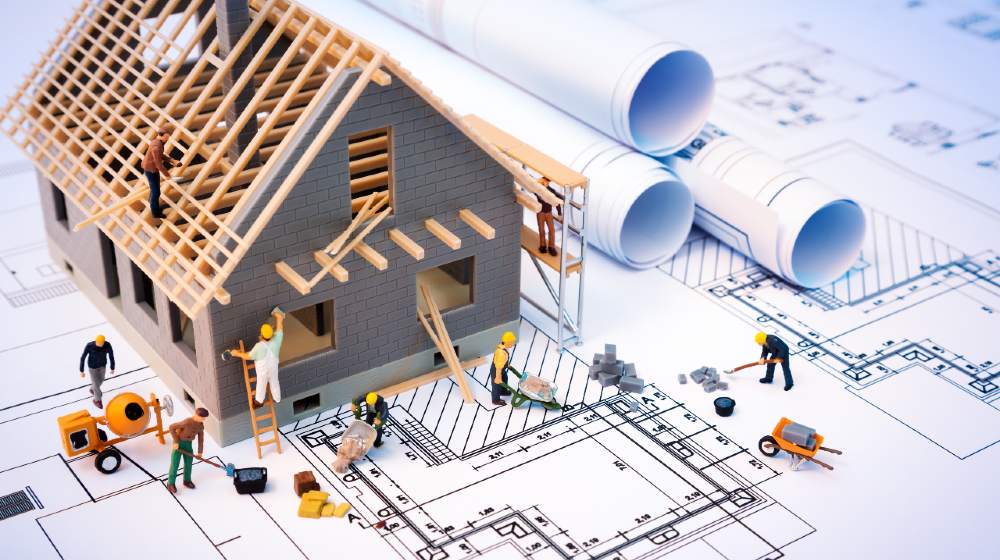Business
House Construction Costs Are Going Through The Roof

This resulted in lower numbers for new home construction, which fell almost 10% in April compared to the previous month. Apart from the rising cost of materials, the supply of homes for sale continues to lag.
RELATED: US Housing Sales Boom Will Last Until 2021
Housing Market In Chaos
According to the U.S. Department of Housing and Urban Development (HUD) and the US Census Bureau, new home construction rates went down.
Meanwhile, housing inventory stayed around the two-month supply range in February and March. This means the numbers fall below the six-month benchmark needed for a balanced housing market.
However, buyer demand has yet to go down. The increased demand for new homes is pushing prices high while creating an unsustainable market.
Now, the construction slowdown will likely exacerbate the housing market’s woes. Sherri Calcut, BOK Financial Mortgage president, gave the sector’s assessment. “We are continuing to see a trend of increasing home prices driven by insufficient housing inventories across our footprint and the country.
With home prices rising and mortgage interest rates inching higher from 2020 historic lows, we are seeing an effect on housing affordability. However, buyers are still extremely active within our markets, we simply just don’t have sufficient inventory supply,” she said.
Construction Costs Are Skyrocketing
At the same time, construction costs are skyrocketing. Builders are feeling the pressure to pause and reassess their businesses.
This way, they can protect their profits better in the midst of increasing prices of materials. Meanwhile, homebuyers will need to review contracts for new house purchases.
If not, buyers might get sticker shock from the latest prices of lumber, wiring, drywall, and others. Conversely, smart buyers can lock up the costs even as prices continue to rise.
As a result, many builders are mitigating rising prices by adding contingency costs to their contracts. Buyers who sign these terms now need to agree that price increases can happen in the midst of the construction period.
Some builders, meanwhile, stopped accepting new jobs altogether. Mickeal Soliman, CEO of New Jersey General Contractors and Builders, said he won’t take any new clients while prices of materials remain sky-high.
“Lumber is so crazy, I’m not selling a house until it’s built. When you start telling people that the cost of their build is going to rise because lumber prices are rising, they start asking questions and getting worried. It’s not worth it. Now, we just build new homes and the price is the price when it’s done.”
Lumber Prices Are Going Through The Roof
Lumber prices started going up in January, with lumber futures priced at around $700 per thousand board feet. By May futures are now going around $1,400 even going at $1,670.50
Since that record peak on May 7, prices are gradually falling down. However, the decrease in prices is not a guarantee of a continuing trend, says Andrew Goodman, CEO of Sherwood Lumber in Long Island (NY).
“In the last six days, there’s been a significant turn of events in the lumber futures. It’s fallen 20% from record highs and nobody knows how much more that will fall. There’s a lot of price depreciation left in the historic run-up of prices. It’s just a matter of time.” he said.
The timber industry can catch up with demand by increasing supply and even adding sawmills. This can also help lower the cost.
However, experts don’t anticipate a drop in prices as the demand remains high. “In terms of building material, whether it’s structural lumber, appliances, or drywall, the supply-side issues should persist into 2022 and demand will also remain strong,” says Robert Dietz, chief economist at the National Association of Home Builders.
Watch the WDIV Click on Detroit News video reporting that construction costs are skyrocketing:
Do you find the cost of building materials too high right now? Will that stop you from buying a house right now?
Let us know what you think of rising construction costs and building materials. Share your thoughts in the comment section below.



